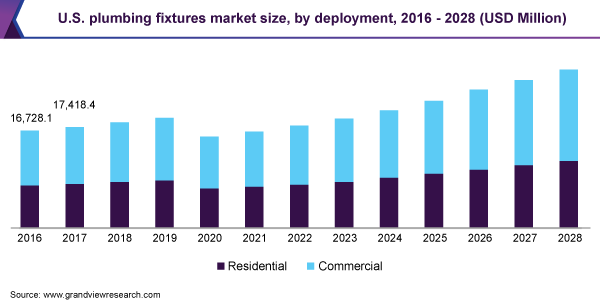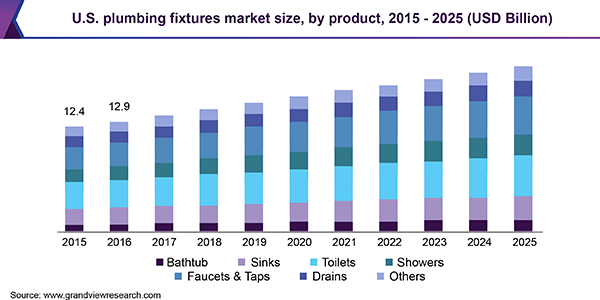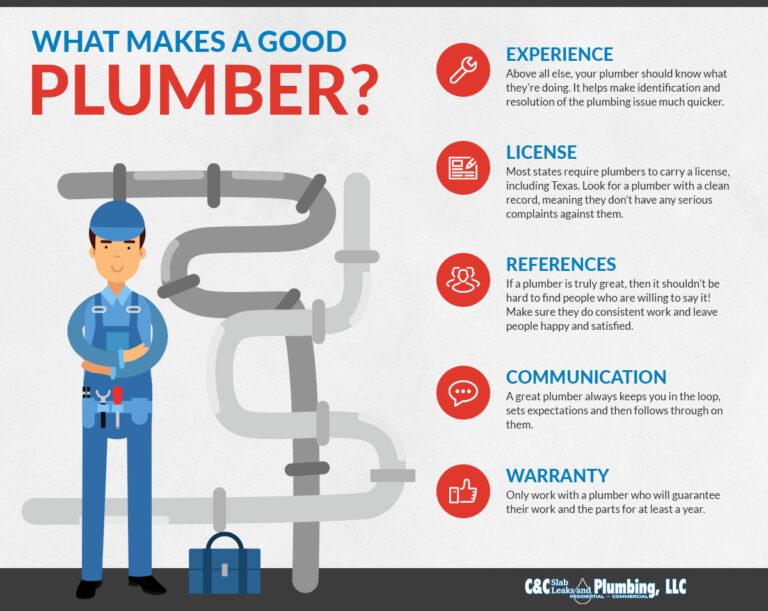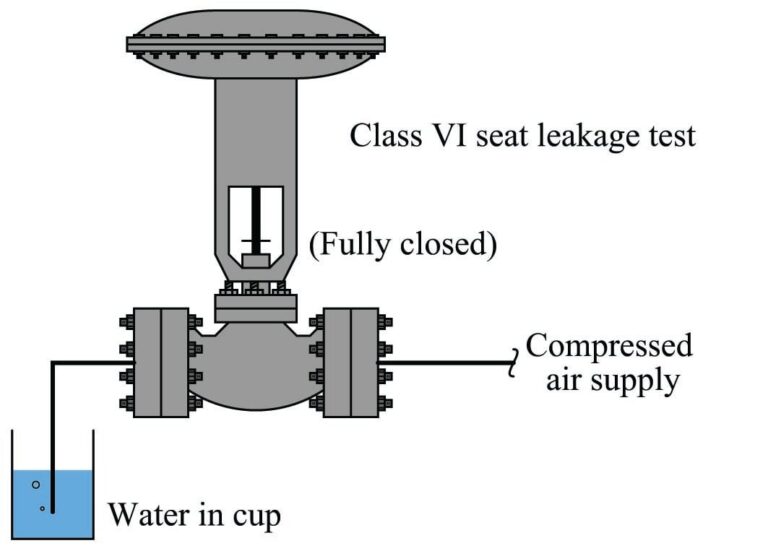How Big Is The Plumbing Industry?
The plumbing industry is a diverse and vibrant sector of the construction industry. It encompasses the installation, repair, and maintenance of pipes, fixtures, and other plumbing equipment, as well as the installation of new plumbing systems. It is estimated that the plumbing industry is worth in excess of $92 billion annually in the United States, making it one of the largest industries in the country. Plumbers are highly skilled and trained individuals who are essential for the proper functioning of homes and businesses. They are also responsible for ensuring that our water supply is clean and safe to use. From residential homes to commercial buildings, a plumber’s work is essential for the health and safety of the people who live and work in them.
Overview of the Plumbing Industry
Plumbing is an essential industry that is responsible for the installation, maintenance, and repair of water and wastewater systems. It is one of the oldest industries in the world, as it has been around for centuries. It is also a highly lucrative industry, with an estimated global market value of over $200 billion dollars.
In the United States alone, the plumbing industry is estimated to employ over 500,000 people and contribute more than $100 billion dollars to the economy. It is a highly competitive industry with many different types of plumbing services available, such as residential, commercial, and industrial. Additionally, the plumbing industry is expanding beyond the traditional services, and now includes new technologies such as solar powered water heaters and water filtration systems.
The plumbing industry is also growing in other countries, particularly in developing countries. The demand for plumbing services is increasing due to the rapid growth of cities and the need for better sanitation and water supply. This is creating an opportunity for international plumbing companies to expand their operations and tap into new markets.
Overall, the plumbing industry is a large and growing industry that is essential for the infrastructure of our modern society. It is an industry that is constantly evolving and adapting to new technologies and customer demands. With the right tools and expertise, plumbing professionals are well-positioned to take advantage of the opportunities that this industry has to offer.
Size of the Plumbing Industry
The plumbing industry is a significant market, with a global revenue of over $108 billion in 2020. The industry is expected to grow at a compound annual growth rate of 5.2% from 2021 to 2026. This growth is attributed to the increasing population, urbanization, and economic growth worldwide.
In the US alone, the plumbing industry generated over $53 billion in 2020 and is expected to grow at a compound annual growth rate of 4.8% from 2021 to 2026. The increasing demand for energy-efficient plumbing systems and the introduction of new technologies are some of the key factors driving the growth of the US plumbing industry.
In the UK, the plumbing industry is estimated to be worth £11 billion in 2020 and is expected to grow at a compound annual growth rate of 5.8% from 2021 to 2026. The introduction of stringent regulations on water safety, the increasing demand for water-efficient plumbing systems, and the rising need for remodeling and renovation services are some of the key factors driving the growth of the UK plumbing industry.
Overall, the global plumbing industry is expected to remain strong over the forecast period, driven by the increasing population, urbanization, and economic growth worldwide. The introduction of innovative technologies, stringent regulations, and the increasing demand for water-efficient plumbing systems are some of the key factors driving the industry growth.
Demand Drivers of the Plumbing Industry
The plumbing industry is a rapidly growing sector that plays an important role in the global economy. It is a large and diverse industry that encompasses a wide range of activities, products, and services. Demand drivers are a key factor in the plumbing industry’s growth. They directly influence the demand for plumbing services, products, and supplies and can have a significant impact on the industry’s overall performance.
Demand drivers can be divided into macroeconomic and microeconomic drivers. Macroeconomic drivers refer to factors such as population growth, income levels, and consumer confidence. These factors have a direct effect on the demand for plumbing services and products. Microeconomic drivers, on the other hand, refer to factors such as product innovation, technological advancements, and new regulations. These drivers can have a more focused impact on the demand for specific plumbing services and products.
In addition, the plumbing industry is heavily influenced by trends in the construction sector. This sector has been steadily growing over the past few years, which has led to increased demand for plumbing services and products. The industry is also affected by consumer preferences and tastes, which can influence the demand for specific plumbing products and services.
Overall, the plumbing industry is a large and diverse industry that is heavily influenced by a range of macroeconomic and microeconomic drivers. Demand drivers, such as population growth, income levels, and product innovation, have a direct impact on the industry’s overall performance. In addition, trends in the construction sector, consumer preferences, and tastes can also affect the demand for plumbing services and products.

Key Players in the Plumbing Industry
The plumbing industry is a complex system of interconnected players, each serving their own purpose. From manufacturers to plumbers, these key individuals play a critical role in the industry.
Manufacturers produce the materials needed for plumbing jobs, such as pipes, fittings, and fixtures. They often have to develop new materials to meet changing needs and regulations. Plumbers are the individuals who install and repair plumbing systems. They must be licensed in the state they work in and must have a thorough knowledge of the plumbing codes and regulations.
Suppliers provide the tools and materials needed for plumbing jobs. These suppliers may be building material stores or specialty plumbing supply stores. They typically provide a wide range of products for plumbers to choose from.
Contractors, such as general contractors, are responsible for overseeing the entire plumbing job. They are responsible for hiring the plumber and ensuring the job is completed on time and within budget. Contractors also help customers by providing estimates and advice on plumbing projects.
Finally, government agencies are responsible for enforcing plumbing regulations and codes. They also inspect plumbing installations and repairs to ensure that they are up to code. Without these agencies, the plumbing industry wouldn’t be able to function properly.
The plumbing industry is comprised of a variety of key players, each of whom plays a vital role in the industry. From manufacturers to plumbers, suppliers to contractors, and government agencies, each of these key individuals helps to ensure that the plumbing industry is able to function efficiently and safely.
Challenges Faced By the Plumbing Industry
The plumbing industry is a massive sector that plays a vital role in the running of our society. From providing clean water to households to making sure that waste is safely and efficiently removed, plumbing services are essential to our day-to-day lives. Unfortunately, there are several challenges that the plumbing industry faces.
One of the most common challenges is a lack of qualified plumbers. With the demand for plumbing services continually growing, the industry is struggling to keep up with the demand. As a result, many plumbers are overworked and underpaid, leading to an increasing number of plumbers leaving the industry.
Another challenge faced by the plumbing industry is the rising costs of materials. With the cost of raw materials, such as pipes, valves, and fittings all increasing, it has become more difficult for plumbers to keep their prices competitive. Furthermore, many plumbers are now having to use more expensive materials in order to meet modern safety and efficiency standards.
Finally, the plumbing industry is facing an aging workforce. As the population ages, fewer people are able to work in the industry. This is resulting in a shortage of qualified plumbers, which is further exacerbating the industry’s challenges.
Despite these challenges, the plumbing industry continues to be an essential part of our society. With the right measures in place, the industry can continue to provide the vital service of providing clean water and safely disposing of waste.
Opportunities for Growth in the Plumbing Industry
The plumbing industry is a growing sector, with the potential for substantial growth in the near future. The sheer size and scope of the plumbing industry is quite large and offers a wide range of opportunities for those looking to get involved. According to recent reports, the plumbing industry is worth over $60 billion dollars and is growing at a steady rate. This is a huge opportunity for entrepreneurs and those looking to invest in the industry.
Plumbers and contractors have an abundance of opportunities from traditional plumbing jobs, such as water or sewer line installation, to more specialized jobs, such as medical gas systems or hydronic systems. Additionally, plumbing services are becoming increasingly in-demand, as more and more people choose to outsource their plumbing needs. This creates a great opportunity for plumbers to increase their customer base and expand their services.
Furthermore, the introduction of new technologies and materials to the plumbing industry has opened up even more opportunities for growth. Low-flow fixtures, tankless water heaters, and smart home systems are just a few examples of how technology is revolutionizing the plumbing industry. As these technologies become more prevalent, the demand for plumbing services will continue to rise.
The plumbing industry provides a wide range of opportunities for growth, from traditional plumbing services to more specialized services. As the industry continues to grow, more and more opportunities will become available. Therefore, now is the perfect time to get involved in the plumbing industry and take advantage of the many opportunities it has to offer.
FAQs About the How Big Is The Plumbing Industry?
Q1: What are the main services offered by the plumbing industry?
A1: The plumbing industry provides a wide range of services including installation of new plumbing systems, maintenance and repairs of existing plumbing systems, and the installation of water heaters, water filtration systems, and other related plumbing fixtures.
Q2: How large is the global plumbing industry?
A2: The global plumbing industry is estimated to be worth over $1 trillion in annual revenues. This industry employs over 6 million people in the United States and over 30 million people worldwide.
Q3: What are some of the most common plumbing services requested?
A3: The most common plumbing services requested are repairs of leaking pipes, installation of new faucets and fixtures, and installation of water heaters. Other services include the installation of water filtration systems, septic tank maintenance, and backflow prevention.
Conclusion
The plumbing industry is a massive and important part of the economy. It is estimated that plumbing contributes more than $105 billion to the U.S. economy each year, making it one of the largest industries in the country. Plumbing is essential to the maintenance and operation of homes, businesses, and other establishments, and offers a wide range of job opportunities for those looking to enter the field. With its expansive size and impact, the plumbing industry is a valuable and important part of the American economy.







